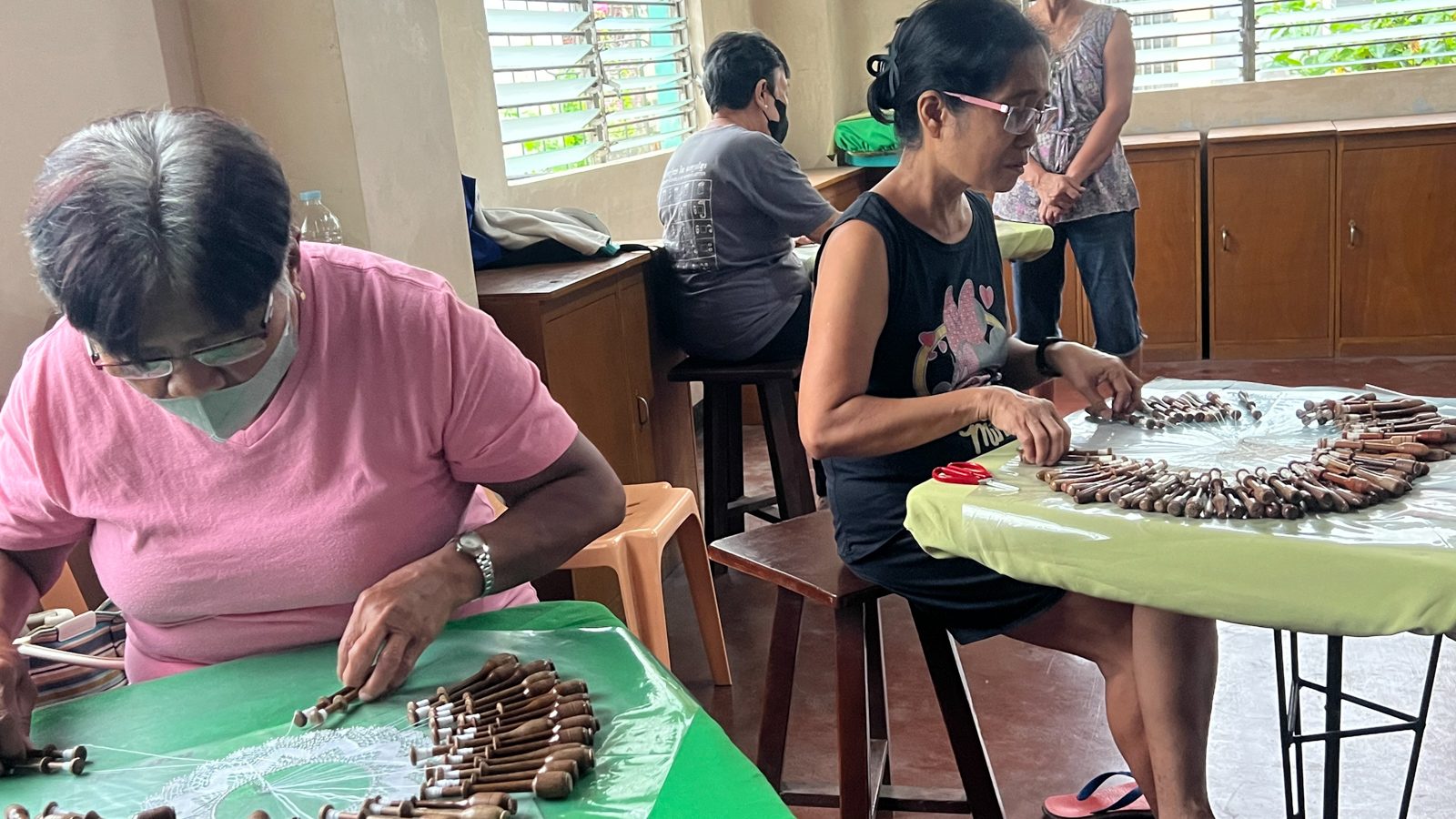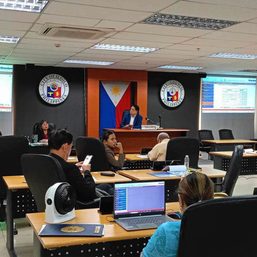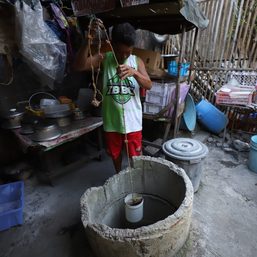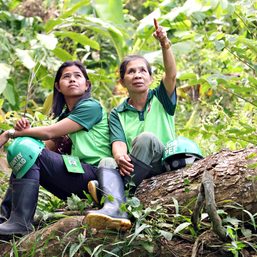SUMMARY
This is AI generated summarization, which may have errors. For context, always refer to the full article.

ILOILO, Philippines – The street lines drooping across the gate gave a hint of the tough times that Santa Barbara town’s famed bobbin lacemakers face.
Our Iloilo provincial tourism office guide, Melanie Ortega, got down and scrounged for a long branch to raise the tangled wires so the van could enter.
There was hardly a sign of artisanal chic on May 3 as we passed trees and shrubs that hid the workshop of the Women United Through Handcrafted Lace and Embroidery at the back of the Western Visayas District Hospital.
Old brochures carry the name W.U.T.H.L.E. Inc, but everyone simply calls it by the generic name, “Bobbin Lace,” a nod to its unchallenged perch atop Iloilo’s craft landscape.
Deceptively casual
Inside the modest structure, groups of women chatted or burst into laughter.
As they smiled and nodded, or shook their heads, hands kept busy shuttling wooden pegs that looked like miniature bowling pins with fine, white thread wrapped around them.

The women’s behavior belied the challenge of keeping lines, points and curves, and the spaces in-between perfectly taut as they pinned and twirled threads into intricate patterns.
May Quitor has spent more than 20 years working in the lace workshop. That level of experience makes it easy to spot an error.
She kept up with the conversation as her hands paused to unravel the flawed section.
It is hard, intense work, only made to look easy by these veterans.
Mariani de Perez, pointing to a soft, cream-colored column, told Rappler it can take a day to finish just one 2.5-square-inch motif.
A small lace cross also takes a day to make.
Corazon Arellano said she needed four days to complete an embroidered bird on a small patch of cloth.
A white-on-white, floral blooms-embroidered hand towel (P700) also took four days to make; a doily in white, pale gold, and green, a week.

Even with Ortega’s pre-visit briefing, it was easy to overlook the fact that the hands manipulating the wooden bobbins carried the scars of Hansen’s disease.
Jocelyn smiled as she chanted “one-two-three-four; one-two; one-two-three” to show how easy it is to keep rhythm.
But the former embroiderer said she had to transfer to the bobbins when her flesh could no longer feel the pain of needle pricks. Numbness of affected areas of the skin is a common symptom of the ancient illness known in biblical times as leprosy.
Jocelyn recovered after three years of treatment. She and the other lacemakers are considered “negatives” – a reference to tests showing no presence of the bacteria that causes leprosy.

Survival skills
Santa Barbara’s bobbin lace artisans learned their craft as hansenite patients in the 1980s and early 1990s.
Their mentors were the Missionary Sisters of the Immaculate Heart of Mary (ICM), better known as the nuns who run St. Theresa’s College.
The religious order had in the 1980s taught the same art to orphans at the Asilo de Molo, now a home for seniors with no families.
In 1991, two young girls from the orphanage gave Belgian ICM Sister Madeleine Dieryck an embroidered handkerchief.
Dieryck was then working among the hansenite patients at what was then called the Western Visayas Sanitarium. She thought the craft could raise funds for families of affected individuals.
A cure had already been found for Hansen’s disease, and countries started using the cocktail of antibiotics in the 1980s.
However, lingering stigma made it difficult for recovered patients to get jobs as many sported disfigurement in the extremities and, sometimes, the face.
“I learned from the sisters as a girl,” Suzette Villan told Rappler. “In 1992, they asked me to train the women patients.”

Upscale but floundering
The women of Bobbin Lace always knew their market was upscale.
They made vestment decorations for the eminences at the Vatican and the stoles that clergy unwrap for special occasions.
Atop a glass display station, a magazine article showed a bespoke lace wedding dress bolero that took three months to make.
Of the original 50 lacemakers, only around 20 remain.
“The sisters encouraged young patients to pursue studies as they made lace and underwent treatment, and they are now teachers or other professionals,” Villan said.
Over three decades, these lacemakers stockpiled products for numerous trade fairs in the province and even in other regions and the capital.
“But since the COVID-19 pandemic put everything on hold, we have been forced to work only when there are confirmed orders,” said Villan.
Difficulties in shipping and local mobility also disrupted their foreign market.
With little capital to fall back on, the association finds it hard to build up their stocks again, said Villan.
COVID-19 also derailed their plans to incorporate or form a cooperative following the turnover of the building by the departing ICM sisters.
Villan acknowledged that the association needs some upgrades in work and marketing standards to improve earnings from their labor-intensive craft.
The group appealed for the provincial government or the new national leadership to help them regain a more stable footing with production and training grants, and aid in creating packaging and branding for the right market.
Ortega, who earlier brought in officials of the Department of Trade and Industry, said she hoped they would return and fulfill their pre-pandemic pledge to help the women improve production and marketing systems.
Iloilo’s civic community has lately tried to sustain some vestiges of the crafts that made it a premier center for textile production and art in the 18th to the early 20th centuries
The advent of machines and cheap, imported manufactured cloth killed most of the local industry, leaving only a few artisans.
The bobbin lace artisans may not be creating indigenous textile but it would also be a pity for a craft associated with a history of compassion and community involvement to just die out. – Rappler.com
Add a comment
How does this make you feel?

![[Ilonggo Notes] Putting the spotlight on Ilonggo and regional cinema](https://www.rappler.com/tachyon/2024/04/Screenshot-2024-04-07-at-2.04.59-PM.png?resize=257%2C257&crop=321px%2C0px%2C809px%2C809px)












There are no comments yet. Add your comment to start the conversation.